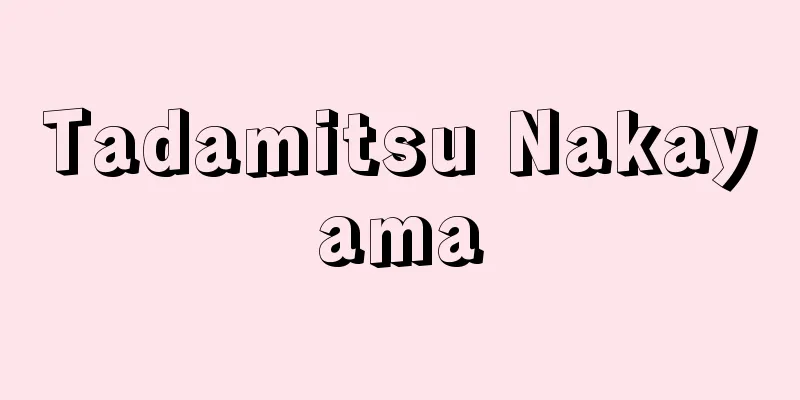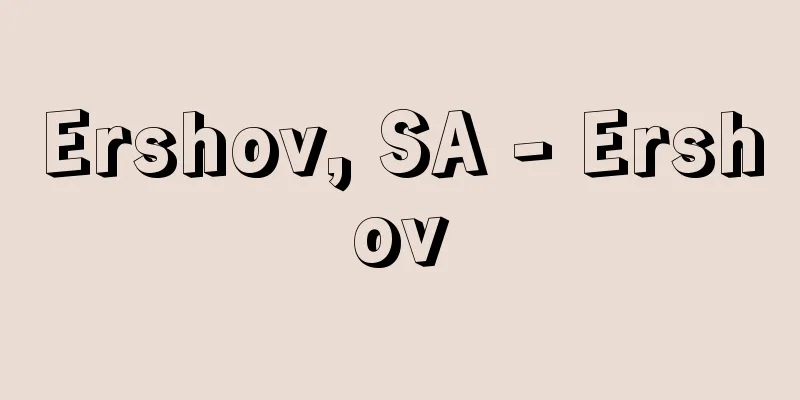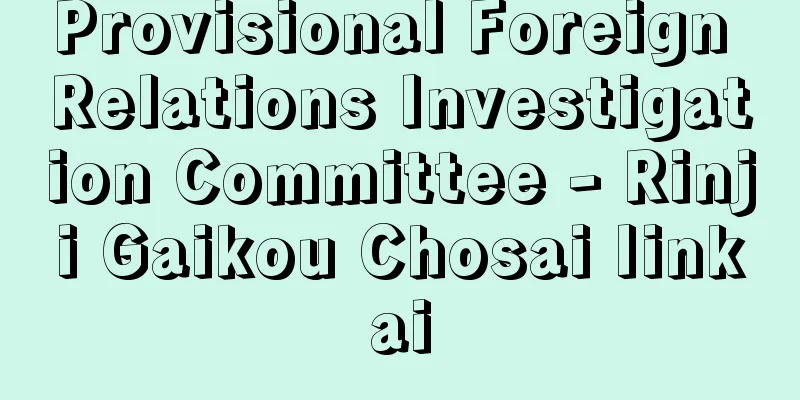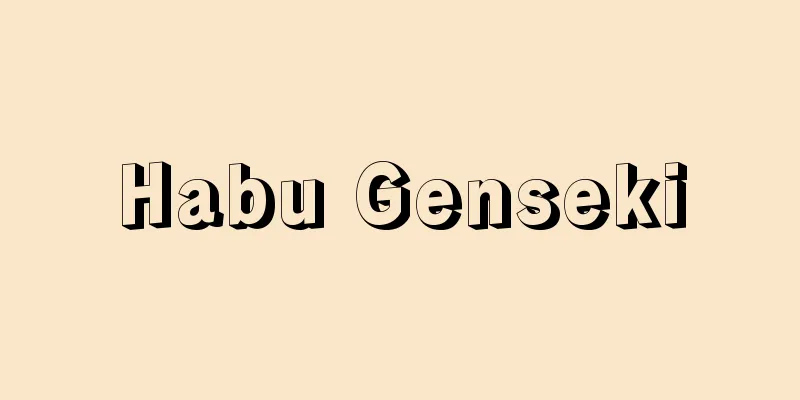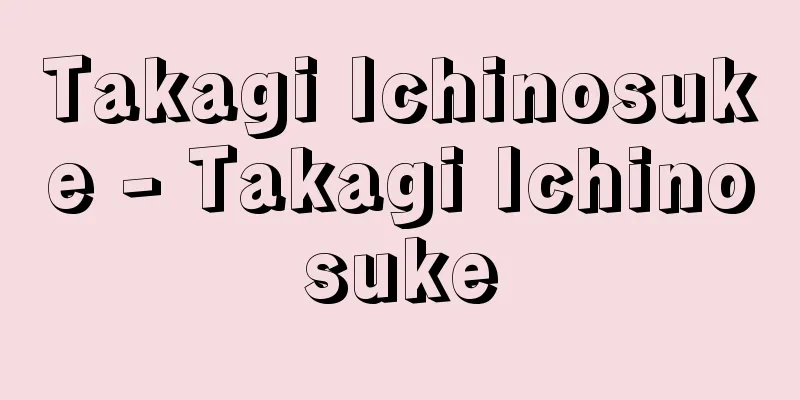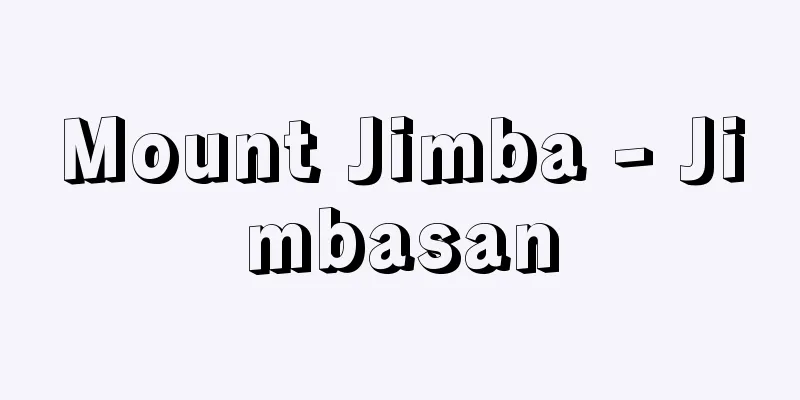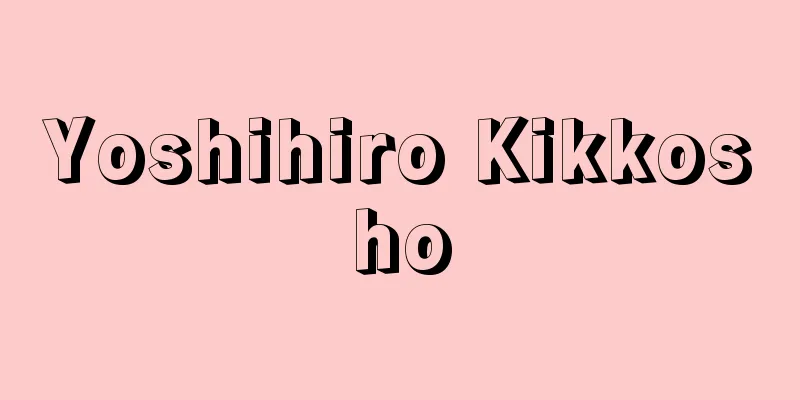General magazine - Sougouzasshi

|
A magazine that is edited to include intermediate reading material such as papers, essays, reportage, and character studies covering a wide range of subjects such as politics, economics, culture, and thought, as well as original works. [Mitsuyoshi Ebihara and Kazuhiro Kobayashi] Pre-World War IIThe term "general magazines" was established during the Pacific War, when the government implemented magazine consolidation and paper allocation measures (which had a strong aspect of censorship) to restrict publication, but the origins of such magazines can be traced back to "Kokumin no Tomo" (first published in 1887), "Taiyo" (first published in 1895), and even "Meiroku Zasshi" (first published in 1874). However, the coexistence of highly intellectual elements and intermediate reading material, and this style of general-purpose magazine, which was unparalleled overseas, can be seen as having typically taken shape in the 1910s and 1920s, when the magazine Hanseikai Zasshi (first published in 1887), which was published by young monks of Nishi Honganji Temple with the slogan "Abstinence and Promote Virtue", was renamed Chuo Koron in 1899 (Meiji 32) and, thanks to the efforts of the famous editor Takita Choin, it was able to dispel its Buddhist influence and transform into a high-class magazine that attracted many intellectuals. At that time, Chuokoron published progressive opinions from people-based writers such as Yoshino Sakuzo and Oyama Ikuo, and also enriched its middle-page reading and literary columns, boldly featuring newcomers such as Miyamoto (Nakajo) Yuriko in addition to established authors such as Natsume Soseki and Mori Ogai, which attracted attention and led to a rapid expansion of its readership. Reflecting the climate of the times, Kaizo was launched in April 1919 (Taisho 8) with a more radical Marxist tone, and the two magazines began to compete fiercely over the editing of each issue. On the other hand, Bungeishunju (founded in 1923), which started out as a literary magazine edited by Kikuchi Kan and expanded its scope to include current affairs, and Keizai Orai (founded in 1926), a magazine centered on economics, changed its title to Nippon Hyoron (1936) and transitioned into a general-purpose magazine, and the era of competition between these four magazines continued for a while. However, the prolonged Sino-Japanese War and the outbreak of the Pacific War significantly shifted journalism as a whole to the right, and Bungeishunju, along with Gendai (founded in 1920) and Koron (founded in 1939), began to preach extreme nationalism, while magazines such as Chuokoron, Kaizo, and Nippon Hyoron, which had managed to hang on to a tenuous hold on rationalism, were ordered to voluntarily cease publication and close their companies by the Tojo Cabinet in July 1944 (Showa 19) as the Yokohama incident was being framed, in which editors were arrested one after another. By the end of the war, both magazines were already fully cooperating with the military and the government, so this action could only be described as an arbitrary exercise of power. [Mitsuyoshi Ebihara and Kazuhiro Kobayashi] After World War IIJapan's unconditional surrender in 1945 (Showa 20) made possible the spectacular revival of Chuokoron and Kaizo, and the people, angry at the irresponsibility of the military and government and hungry for free speech, competed to look to general-purpose magazines for democratic ideals and information, and a great number of general-purpose magazines were founded or revived, including Shinsei, Tenbo, Choryu, Sekai, Sekai Hyoron, Asahi Hyoron, Nippon Hyoron, and Bungeishunju. However, most of them were short-lived, and the revived Kaizo also disappeared (1955). Only one magazine, Sekai, was founded immediately after the defeat and has maintained its editorial policy to this day. Amid a flood of entertainment-oriented weekly magazines, Asahi Journal (founded in 1959) fought hard as a general-purpose weekly magazine, but was forced to cease publication in 1992 (Heisei 4). In this climate of stability, general-purpose magazines are said to have lost their former vitality, and even in this field, which has a tradition of criticizing the system and being anti-authority, there seems to be a trend toward middle-grounding and conservatism. Although they have limitations as commercial magazines, the future of general-purpose magazines, which have made their unique critical nature their selling point, is in chaos. In particular, it is said that each magazine has not responded adequately to the era of the industrialization of educational information that began in the 1970s, the new media era of the 1980s, and the computerization and Internet era of the 1990s. With the younger generation tending to prefer commentary over critique and critique, and raw information over commentary, one could say that the very existence of traditional general-purpose magazines is being called into question. [Mitsuyoshi Ebihara and Kazuhiro Kobayashi] Suzuki Hitoshi, "Stagnation and Change of General-Purpose Magazines" (included in Jurist Special Issue General Feature 5: Contemporary Mass Media, 1976, Yuhikaku) Tadokoro Taro, "Genealogy of Postwar Publishing" (1976, Japan Editors School Publishing Division) Uchikawa Yoshimi and Arai Naoyuki (eds.), "Japanese Journalism" (1983, Yuhikaku) Hatanaka Shigeo, "A Summary of the Suppression of Freedom of Speech in Japanese Fascism" reprint (1986, Kobunken) Ishizaka Yoshio (ed.), "Transformation of the Mass Media Industry: How Will It Change with the Information Revolution" (1987, Yuhikaku) Shimizu Hideo, "Freedom and Responsibility of the Mass Media" (1993, Sanseido) [References] | | | | | | | | | | | |Source: Shogakukan Encyclopedia Nipponica About Encyclopedia Nipponica Information | Legend |
|
政治、経済、文化、思想などの広い分野にわたる論文やエッセイ、ルポルタージュ、人物論などのいわゆる中間読み物、それに創作を配して編集される雑誌。 [海老原光義・小林一博] 第二次世界大戦前総合雑誌という名称は、太平洋戦争下、政府が実施した雑誌統廃合による用紙割当て(強い言論統制の面をもっていた)の際に定着したのであるが、こうした雑誌の源流をたどれば、『国民之友』(1887創刊)、『太陽』(1895創刊)、さらに『明六(めいろく)雑誌』(1874創刊)にまでさかのぼることができよう。しかし、高い知的要素と中間読み物が共存し、外国には例をみないこうした総合雑誌のスタイルが典型的に形成されるのは、西本願寺の若い僧侶(そうりょ)たちが「禁酒と進徳」を標語として発刊した『反省会雑誌』(1887創刊)が、1899年(明治32)『中央公論』と改題され、名編集者滝田樗陰(ちょいん)の活躍によって仏教色を払拭(ふっしょく)し、多くの知識人をとらえる高級雑誌に変貌(へんぼう)を遂げた1910年代から20年代にかけてとみてよいであろう。当時の『中央公論』は、民本主義の吉野作造や大山郁夫(いくお)らの進歩的言論を掲載するとともに、中間読み物や文芸欄を充実して、夏目漱石(そうせき)、森鴎外(おうがい)など既成の作家に加えて、宮本(中条)百合子(ゆりこ)のような新人をも大胆に登場させて話題をよび、読者層も急速に拡大していった。1919年(大正8)4月『改造』が、時代の風潮を反映して、より急進的なマルクス主義的論調を看板に掲げて創刊され、両誌は毎号激しくその編集を競うようになった。 他方、菊池寛(かん)編集の文芸雑誌として出発し、時事問題にまで編集の範囲を広げた『文芸春秋』(1923創刊)と、経済中心の雑誌であった『経済往来』(1926創刊)が『日本評論』と改題(1936)して総合雑誌に移行し、しばらくはこれら4誌競合の時代が続いた。しかし、日中戦争の長期化・太平洋戦争の勃発(ぼっぱつ)は、ジャーナリズム全体を著しく右翼化させ、『現代』(1920創刊)、『公論』(1939創刊)などとともに『文芸春秋』も過激な国粋主義を唱えるようになり、合理主義の命脈をわずかに保っていた『中央公論』『改造』『日本評論』などは、編集者が次々と検挙される横浜事件がフレームアップされるなかで、『中央公論』『改造』の2誌が1944年(昭和19)7月東条内閣から自発的廃刊・閉社を命ぜられた。戦争末期の両誌はすでに全面的に軍・政府に協力していたのであり、この処置は、権力の恣意(しい)的行使としかいいようのないものであった。 [海老原光義・小林一博] 第二次世界大戦後1945年(昭和20)日本の無条件降伏は、これら『中央公論』『改造』の華々しい復活を可能にし、軍・政府の無責任に怒り、自由な言論に飢えていた国民は、競って総合雑誌に民主主義の理念や情報を求め、『新生』『展望』『潮流』『世界』『世界評論』『朝日評論』『日本評論』『文芸春秋』などおびただしい数の総合雑誌が創・復刊された。しかし、そのほとんどが短命に終わり、復刊した『改造』もまた姿を消した(1955)。敗戦直後創刊され、その編集方針を持続して今日に至っているのは『世界』1誌だけである。なお、娯楽読み物的週刊誌の氾濫(はんらん)のなかで『朝日ジャーナル』(1959創刊)が総合雑誌型の週刊誌として健闘したが、1992年(平成4)に休刊に追い込まれた。 安定ムードのなかで総合雑誌はかつての生彩を失っているといわれ、体制批判、反権力の伝統をもつこの分野でも中間化、保守化が趨勢(すうせい)のようである。商業雑誌としての限界をもつとはいえ、独自の批評性を売り物としてきた総合雑誌の行方は混沌(こんとん)としている。とくに、1970年代に始まる教育情報産業化の時代、80年代のニューメディア時代、90年代の電子化、インターネット時代への対応は各誌とも不十分といわれている。評論や批評よりも解説を、解説よりも素材情報を好む若い世代の傾向のなかでは、従来型の総合雑誌は存在そのものに疑問が呈されているともいえよう。 [海老原光義・小林一博] 『鈴木均「総合雑誌の停滞と変容」(『ジュリスト増刊総合特集5 現代のマスコミ』所収・1976・有斐閣)』▽『田所太郎著『戦後出版の系譜』(1976・日本エディタースクール出版部)』▽『内川芳美・新井直之編『日本のジャーナリズム』(1983・有斐閣)』▽『畑中繁雄著『日本ファシズムの言論弾圧抄史』復刻版(1986・高文研)』▽『石坂悦男編『マスメディア産業の転換――情報革命でどう変わるか』(1987・有斐閣)』▽『清水英夫著『マスメディアの自由と責任』(1993・三省堂)』 [参照項目] | | | | | | | | | | | |出典 小学館 日本大百科全書(ニッポニカ)日本大百科全書(ニッポニカ)について 情報 | 凡例 |
<<: Armored car - Soukosha (English spelling) armored car
>>: Comprehensive Technology Education
Recommend
Mount Tenmoku
[1][一] The name of a mountain in China. It is the ...
CTOL
…The distance required for takeoff and landing to...
Fireweed - Fireweed
…It seems natural within the realm of common sens...
Insulation paint - Zetsuentoryou (English spelling) coating for insulation
A paint that forms a coating film with high elect...
Benten the Thief
...The first performance was the breakthrough per...
Trieb
...The two great instincts that S. Freud spoke of...
Proletkul't (English spelling)
A cultural organization in the Soviet Union formed...
《God save the King(Queen)》(English) GodsavetheKing
…The oldest is thought to be the Dutch 《Wilhelmus...
Oguchiya Gyouu - Oguchiya Gyouu
…First performed at the Tokyo Kabukiza in April 1...
R Technique - R Technique
...Then, led by the industrialization of society,...
yeshivah
… In the early 5th century, the remaining Jewish ...
Sinkhole
…Doline comes from the Serbian word dolina, which...
Flame Propagation
… Another type of ignition, ignition by a pilot f...
madrigalism
…In contrast, the Renaissance madrigals, which fl...
Thor - Thor (English spelling)
A god in Norse mythology. He is well known along ...
